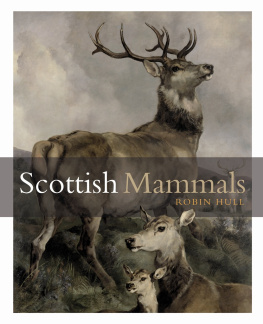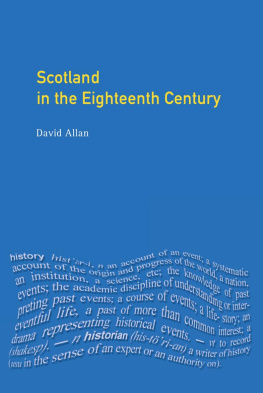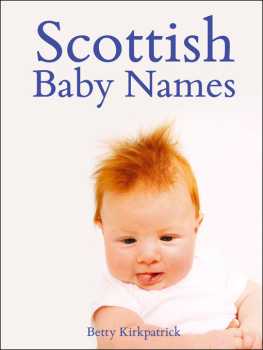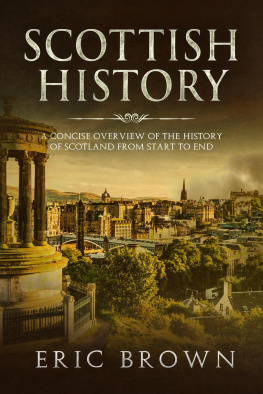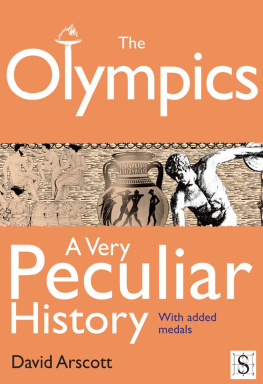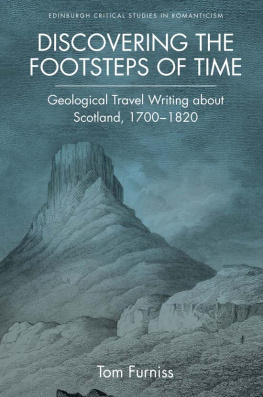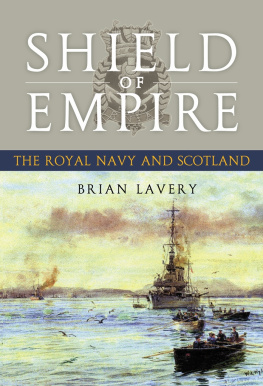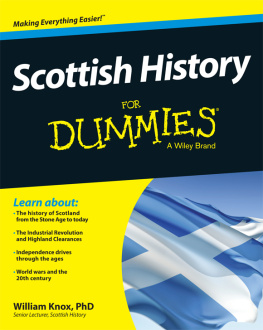Scottish Mammals

This eBook edition published in 2012 by
Birlinn Limited
West Newington House
Newington Road
Edinburgh
EH9 1QS
www.birlinn.co.uk
First published in 2007 by Birlinn Limited
Copyright Robin Hull, 2007
Illustration on pp. copyright Malcolm Appleby
The moral right of Margaret Bennett to be identified as the author of this work has been asserted by her in accordance with the Copyright, Designs and Patents Act 1988
All rights reserved. No part of this publication may be reproduced, stored or transmitted in any form without the express written permission of the publisher.
eBook ISBN: 978-0-85790-545-1
ISBN 13: 978-1-84158-536-9
British Library Cataloguing-in-Publication Data
A catalogue record for this book is available from the British Library
For Gillian, our daughters and our grandchildren
Preface
The making of a naturalist
But I am half a Scot by Birth, and bred
A whole one, and my heart flies to my head,
...
I scotchd not killd the Scotchman in my blood,
And love the land of mountain and of flood.
Byron, Don Juan, x, 17, 19
Byron was born of an English father and a Scottish mother. Byrons mother was the impetuous Catherine Gordon of Gight, a family the ChambersBiographical Dictionary describes as turbulent. I too was born of an English father and a Scottish mother, and though I would describe my mother as ambitious for her children rather than impetuous she certainly brought turbulence to both her marriages.
I, the only child of the second marriage, was born into a family where everyone was old; my nearest sibling was six years older than me and my eldest brother had arrived at the comparative middle age of eighteen. We all lived in what seemed an enormous house in Harpenden in what was then the very rural county of Hertfordshire. From when I start remembering, it housed for most of the time just mother and me. Sidney, the eldest, had left home to work in a bank. Charles, the next brother was at medical school and occasionally came home to show me the contents of a plain wooden box which contained a human skeleton. My father caught a train before I woke and didnt come home till after bedtime, but at weekends he was a mine of information about the invertebrates I found in the garden. Eric, next brother, was at boarding school and so a little later was Pat Riciamary as she called herself.
Not far away from us lived another Scottish mother who visited and blethered with mine. This lady, Dd Bailey, was a gipsy-like Glaswegian who saw dark strangers and long journeys in the dregs of teacups. More to the point she had a daughter slightly younger than I was. Pauline and I were inseparable, even at bath time when we observed, and wondered at, The Difference. Together we adventured in the garden finding woodlice and the terrifying beetles my father called Devils coachmen that, scorpion-like, raised their tails in an exciting manner. We guddled for tadpoles in the garden pond, to the alarm of the fastidiously hygienic Charles. He focussed his microscope to show me a new world of life in a tiny drop of pond water, trying to make believe it was lethal.
In those days Hertfordshire was a rural county with little traffic and if paederasty existed, it did not seem to worry either of our mothers, so, as we grew, Pauline and I wandered everywhere. Not far away was the River Lea where watercress was grown in shallow beds. These were more fun than the garden pond and yielded trophies like freshwater shrimps. Once, glistening in my net was a flapping inch-long bar of silver; in that moment a lifelong fisherman was created. Pauline cut her foot on broken glass in the stream and, emulating brother Charles, I emptied a bottle of iodine over it. Surprisingly, despite her screams, we remained friends, and I still have Frances Pitts How To See Nature with the inscription To Robin From Pauline April 1941. It cost 3s 6d, a huge sum of money in those days.
Early holidays were not much fun; they do not linger in memory for they meant long journeys to visit paternal relatives in Cheshire and maternal ones in a frightening place called Glasgow. More interesting was Rothesay. That meant a steamer journey in those wonderful vessels that plied the Clyde, their great brass pistons thundering up and down to drive the paddles. Two other memories survive: the smell of my aunts house in Rothesay, which I shall always associate with elderly spinsters, and my father pointing out a small black and white seabird with the words look, Robin, thats one of Mother Careys chickens, look how it seems to walk on the water. I must have been about six and it was half a century before I saw another storm petrel.
What happened next was Dd Baileys fault: she suggested that my mother visit Arran. In the summer of 1939 the Hull family set out for the island as war clouds gathered in that glorious last August of peace. We arrived at Lamlash pier the steamers called there before the war where a huge open limousine whisked us south along the shore to turn through woods over a humped bridge spanning a crystal burn and up the hill to Gortonalastair. On the way we stopped and bought a melon. That unremarkable event lingered in a small boys memory as one of the wonders of Arran, for he did not see another melon for five warring years.
Gortonalastair is still there and commands a fine view over Lamlash Bay and Holy Island. To the north the peak of Goatfell beckoned, and there was a mysterious little hut at the bottom of the garden which turned out to be the privy. A magical footpath called the Cuddy Dook ran steeply down through hazel woods, where red squirrels flirted in the canopy, to a rocky shore. On this shore, I spent hours building canals to drain the untidiness of God, who had left the shore a muddle of pools. The whole family was there, digging furiously, on Sunday, 3 September. When the kirk bells rang out at 11 oclock Mother wondered why, for there was no service then. Such was, and is, the peace of Arran that even the onset of war could pass unnoticed. But war it was and there was much parental consternation: two brothers were of fighting age and a third not far off it. And our home, so far to the south, was 25 miles north of London and well within the range of German bombers. It was decided that mother and the younger two children should remain in Arran.
A smaller house, Myrtle Bank, was rented in Lamlash. It is still there too, a tiny two-up, two-down cottage which to a young boy was a dream. Actually there were three up, for in the middle was a tiny space above the stairs large enough to take a tiny bed. The sloping ceiling had a skylight through which, by standing on the bed, I could see the bay and a great swathe of the Clyde behind Holy Island. One day, watching there, I saw hms Hood and hms Renown sail in convoy from Greenock.
Below, there was a rarely used parlour and a kitchen with a huge box bed built into the wall. This was a ready-made stage for the plays enacted by me and my friends. A burn trickled down to the bay, where there were flounders and elvers to guddle. Once I met a Glaswegian evacuee there. With no common language, strife broke out and I ran home sobbing with a black eye. I have viewed Glaswegians with distrust ever since.
The war was remote to me apart from the coming and going of Coastal Defence vessels in Lamlash Bay. But everyone had to do his bit, and for mother, sister Patricia and I this meant collecting sphagnum moss, which was used as wound dressings.

